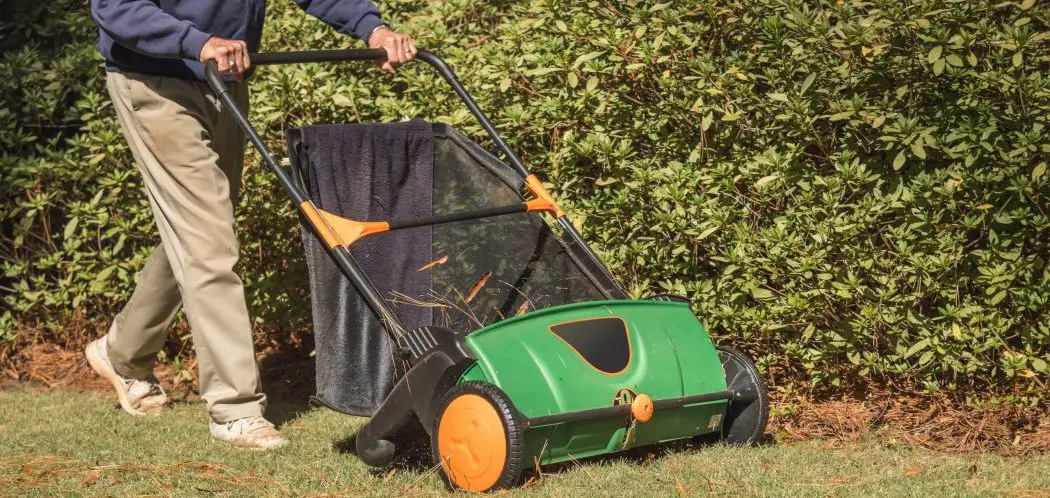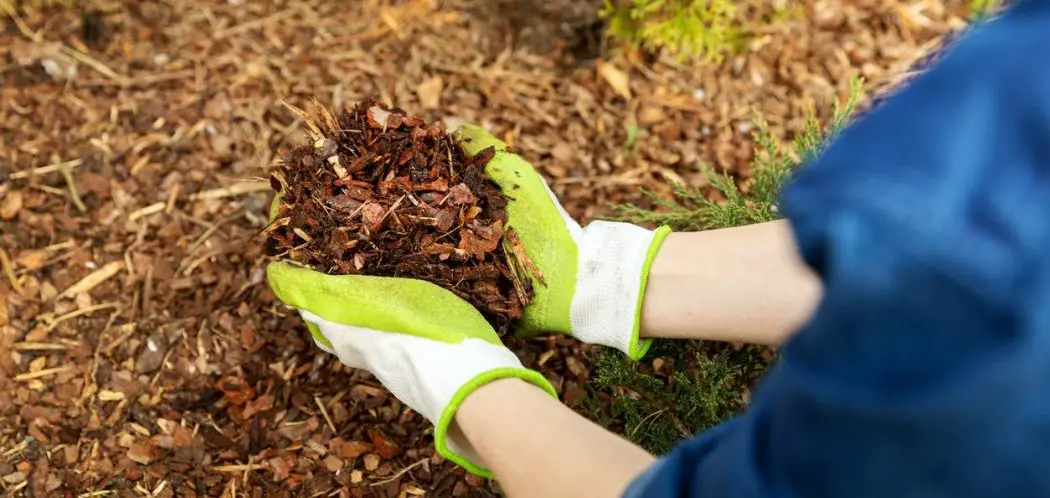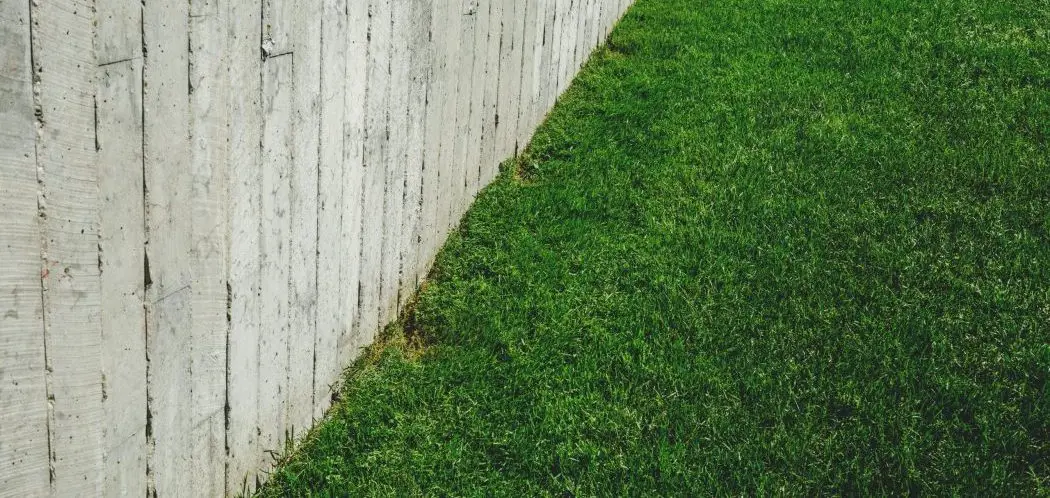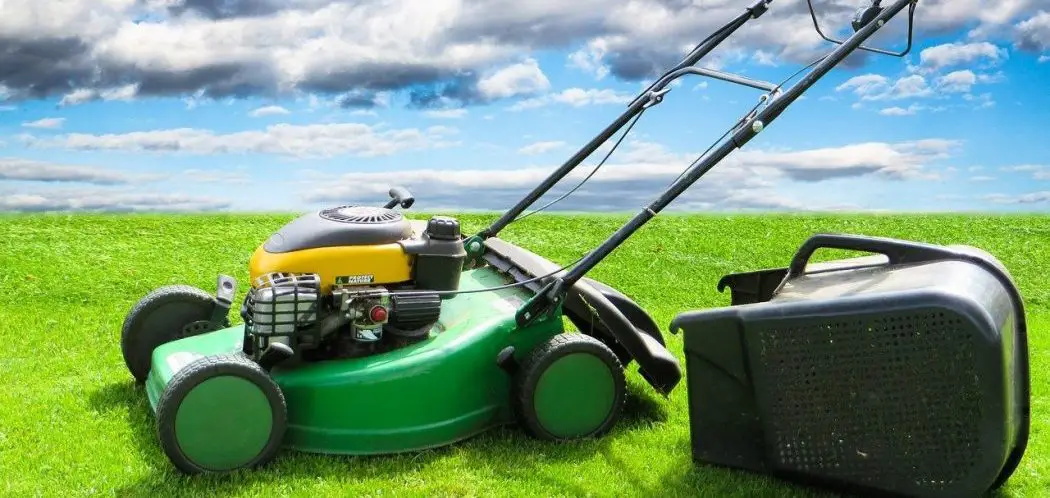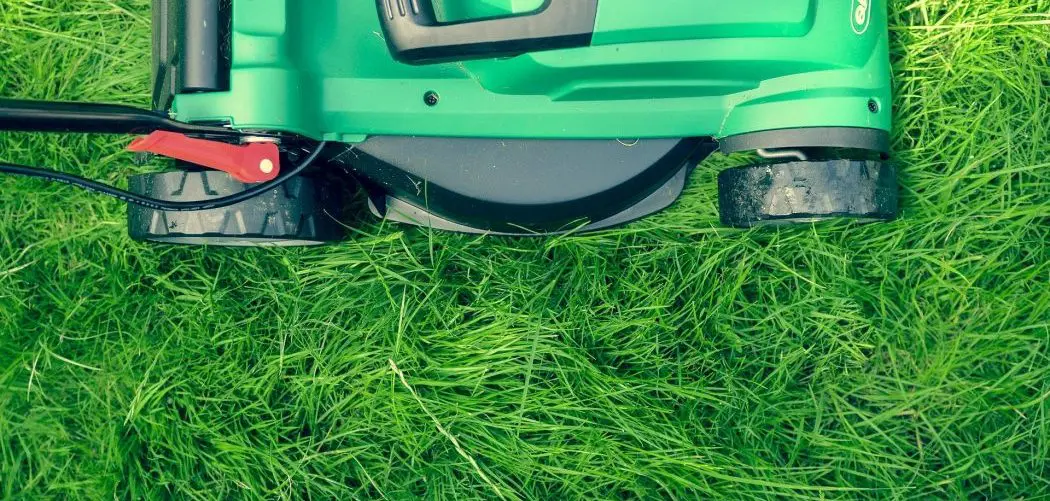What Does a Lawn Sweeper Do?
You can think of a lawn sweeper as a substitute for your rake, except that the lawn sweeper is doing all of the work for you. When you think about it, using a rake is hard on your entire body, especially your back.
Lawn sweepers are usually manual devices that you push along or they are attached to the back of a tractor or riding lawn mower to collect the debris.
The sweepers themselves have mesh-like bags that you can merely empty when you’re done collecting all of the debris from your yard.
A neat and tidy yard is one without debris spread all over it, and a lawn sweeper can certainly make that job much easier on you.
Lawn sweepers are attached to either the back of a tractor or riding lawn mower, or they look like a manual lawn mower but instead work as a sweeper to collect the debris in the yard.
As you mow your lawn, the debris is automatically collected and placed into the sweeper, so you don’t have to do anything different because it is just like cutting your grass.
The manual lawn sweepers feel just like manual lawn mowers, and the tow-behind sweepers are simply attached to your riding lawn mower and utilized that way.
What Should I Look for in a Lawn Sweeper?
Lawn sweepers come in a variety of sizes and designs, and the size of your yard is important when it comes to choosing the right one.
Here are a few things you should look at before deciding which one to buy:
- Adjustable sweeping height: always choose a lawn sweeper with an adjustable height. This way, you can set the height a little higher when the grass you’re mowing is especially high. Depending on the length of your grass and even the lawn conditions, you may have to adjust the lawn sweeper each time you use it.
- Brush-to-wheel ratio: this number is very important because it represents the number of times the brushes (which are used to sweep up the debris) rotate each time the wheel turns. Higher ratios mean the brushes are moving faster, so usually a 5:1 ratio or higher is recommended because these sweepers work harder and accomplish more.
- Cleaning width: for small yards, you can choose one with a width of between 12 and 16 inches. If your yard is big, you may want to opt for a 26-inch width. Tow-behind lawn sweepers offer cleaning widths of up to 48 inches, but while they can sweep up more debris than narrower sweepers can, they can be a bit cumbersome to handle.
- Hopper bag capacity: simply put, the bigger the hopper bag, the less often you have to empty it. Lawn sweepers have hopper bags that range from 5 cubic feet to 25 cubic feet or larger. The larger ones can be a bit heavy once they start to fill up, but they are still convenient because you don’t have to empty them as often.
Push Lawn Sweeper
This is one of two types of lawn sweepers and works much like a manual or push lawn mower.
It is best recommended for people who have small lawns because let’s face it, the bigger your lawn, the more you need a riding lawn mower.
These sweepers are manually operated and have a brush that rotates to sweep and gather up all of your debris. The hopper bag is attached to the sweeper itself and as you push the sweeper along, the debris automatically fills up the hopper bag. Once the bag is full, you simply empty it into another container or use it as a compost pile. It’s that simple!
Depending on the size of the hopper bag and the size of your yard, it shouldn’t take you long to finish sweeping up the leaves and other debris in your yard with a push lawn sweeper. Small and even medium-sized yards are usually completed in no time, and it is much easier on your muscles than a standard rake.
I like this Scott’s model on Amazon that retails for a very reasonable price.
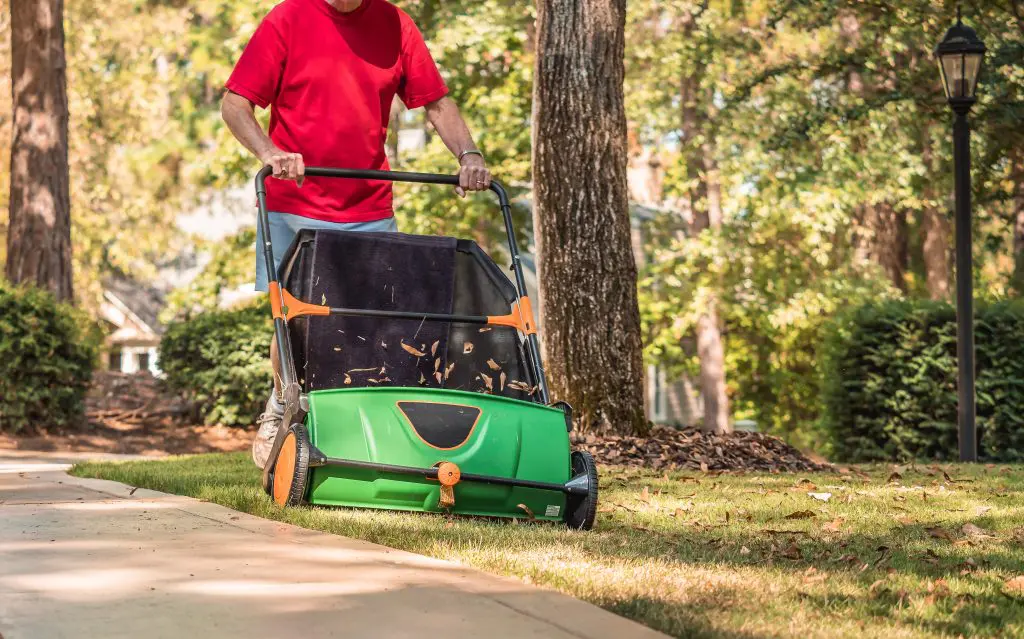
Tow-Behind Lawn Sweeper
Tow-behind lawn sweepers are attached to the back of a tractor or riding lawn mower and are therefore not manual lawn sweepers.
The hopper bags on these types of lawn sweepers are usually available in wider lengths than the push lawn sweepers are, and they are meant mostly for people with large lawns.
Because of their overall size, they can pick up some debris that is slightly larger than the debris picked up by push lawn sweepers. That being said, most lawn sweepers, regardless of the size or type, are unable to sweep up large branches and sticks simply because of the sheer size of these items.
Tow-behind lawn sweepers also tend to be easier to use and a little faster, mainly because you simply mow your lawn as you normally would and the sweeper does the work for you. If you want to sweep up the most debris in the shortest amount of time, the tow-behind lawn sweeper is the one you want, especially if you have a big lawn to mow and sweep.
Tow-behind lawn sweepers tend to be more expensive than push lawn sweepers. (this one from Agri-Fab on Amazon is still reasonably priced and does the it’s job well)
Are There Limitations of Lawn Sweepers?
While there are numerous advantages to owning a lawn sweeper, there are a few downsides as well.
First of all, lawn sweepers attached to a riding lawn mower can make backing up a little more difficult and cumbersome, so you’ll have to be careful when you do so.
In addition, if your lawn consists of rough terrain or has lots of holes and dips, a lawn sweeper may not perform as well as it would if your lawn was smooth and even. Since even small lawns can be bumpy and hilly, this is something you need to consider before purchasing a lawn sweeper.
Another concern with lawn sweepers is that you have to remember that it is much like a broom – hence the name – and therefore it might not be able to pick up all of the debris in your yard. Think of this sweeper as something that is only able to pick up light, small pieces of debris, such as grass clippings, twigs, and small acorns. If you couldn’t pick it up with a broom, you likely won’t be able to pick it up with a lawn sweeper. Larger branches and other debris will likely require a rake or maybe even a leaf-blower to take care of and remove.

Are There Alternatives to a Lawn Sweeper?
You certainly have some alternatives if you choose not to use a lawn sweeper, and the two main ones are:
- leaf-baggers
- leaf-blowers
Just like lawn sweepers, there are many different types of this equipment, but there are still things to consider when you’re trying to decide which one is right for you. For instance, leaf-blowers are super powerful and therefore very fast, but you usually still have to do something with the debris you’ve blown out of your yard when you’re done. After all, you can’t just blow everything into your neighbor’s yard and forget about it.
Leaf-baggers attach to your riding lawn mower and function much like a lawn sweeper does, but it is best used for smaller lawns because it doesn’t work as quickly as a lawn sweeper does. If your lawn is big, you’d probably be better off with a sweeper.
Baggers are also meant to handle lighter debris because they tend to not handle heavy or wet debris very well. For short-term use and for lighter debris, therefore, baggers can be used rather than lawn sweepers.
Of course, if you want to skip all of these items and simply use a mulcher, you can. There are also numerous attachments you can add to either a lawn mower or a lawn sweeper, so you may be able to find attachments for the equipment you currently own that will work just right for you.
In Summary – Should You Buy One?
Lawn sweepers offer a lot of advantages when you’re tired of the aches and pains caused by your rake, and since you can find an easy-to-use, fully functional sweeper regardless of the size of your yard, they are a great addition to the lawn equipment you currently use.
Unless you live far out in the country and have a lot of difficult debris to get rid of, lawn sweepers will work fine and be able to accommodate your needs. If your debris is large or cumbersome, you may need something else, but most people find that a good lawn sweeper more than meets their needs.
In choosing the right lawn sweeper, consider your budget, the size and condition of your lawn, and what you’re going to do with the debris once the sweeper picks it up and bags it. If you’re passionate about a healthy, tidy lawn, but you don’t feel like spending hours cleaning up debris, the right lawn sweeper can be a true miracle-worker, and it is a purchase that you will likely never regret.

